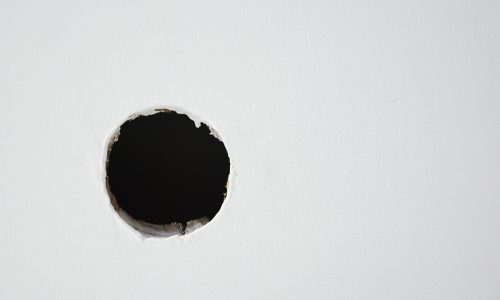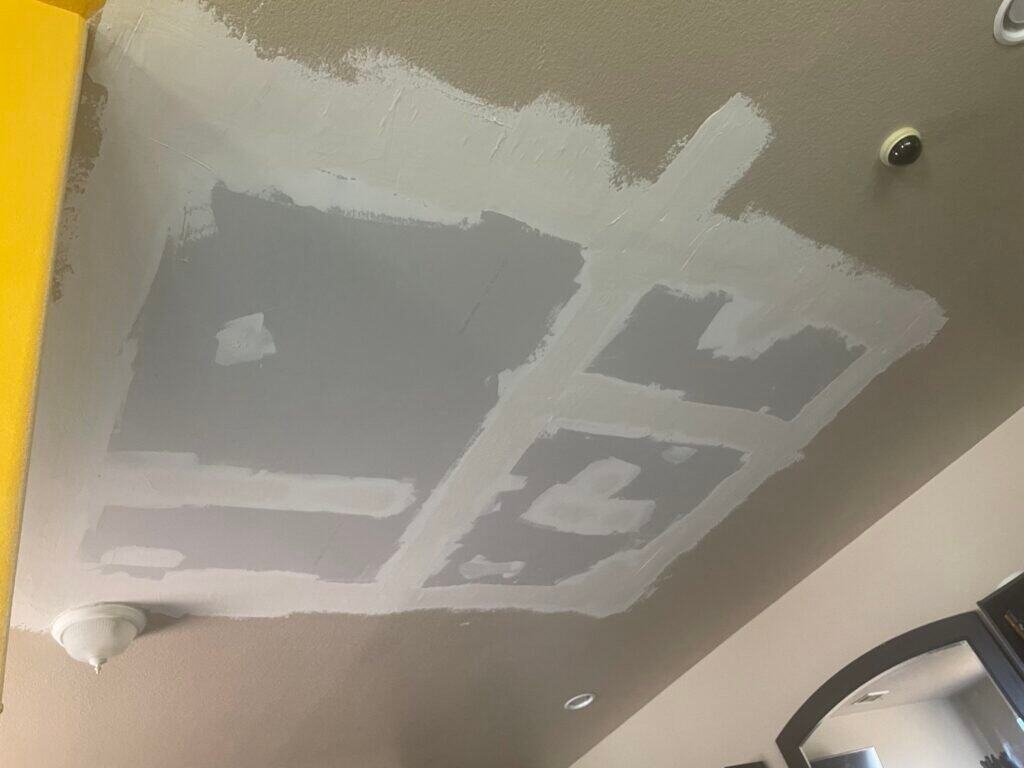Discover the very best Practices for Successful Drywall Repair and Setup
The art of drywall repair and installation requires a blend of ability and accuracy. Understanding the crucial tools is vital for attaining a smooth coating. Understanding the detailed procedure can make a significant difference in the result. Appropriate methods for mudding and taping are likewise essential. What continues to be is the expertise of upkeep that assures long life. These components with each other develop a polished result worth discovering additionally.

Essential Tools for Drywall Repair and Installation
When carrying out drywall repair work and installment, having the right tools can substantially improve the efficiency and high quality of the job. An utility blade is vital for cutting drywall sheets specifically, while a drywall saw can aid in making extra intricate cuts. Taping knives, readily available in different sizes, are important for using joint compound smoothly and uniformly. A drywall sander, preferably with a dust collection attribute, helps accomplish a sleek surface, minimizing the need for substantial cleanup.
Furthermore, a measuring tape warranties precise dimensions, and a level ensures that installations are straight and plumb. Safety equipment, including dirt masks and safety glasses, must not be neglected to protect against particles and dust. Lastly, a stud finder aids in situating mounting participants, guaranteeing protected setup. By gearing up oneself with these crucial tools, the repair and installation process comes to be more convenient and leads to a professional-quality end result.

Step-by-Step Overview to Patching Holes
Covering holes in drywall needs a systematic method to assure a smooth repair. The area around the opening have to be cleaned up and any loosened particles got rid of. For little holes, a putty knife can be used to use a light-weight spackle, pressing it into the opening and smoothing the surface. After it dries out, sanding is important to develop a flat finish. For larger holes, a spot of drywall may be required. This includes cutting an item of drywall somewhat larger than the opening, securing it to the wall surface with screws, and making use of joint compound to cover the seams. Once the compound dries out, it should be fined sand smooth. Priming the patched area prior to paint will assure an also finish. Adhering to these steps will cause a professional-looking repair service that mixes effortlessly with the surrounding wall.
Strategies for Smooth Drywall Installment
Accomplishing smooth drywall setup demands mindful planning and implementation. It is necessary to gauge and reduce drywall sheets properly to decrease gaps. Using an utility knife, installers must rack up the board prior to breaking it along the cut line, ensuring clean edges. Appropriately lining up the sheets is essential; beginning from the leading and functioning down aids maintain harmony.
Fastening drywall to the studs requires consistent spacing, usually every 16 inches, utilizing screws as opposed to nails for much better hold. This technique lowers the threat of pops gradually. In addition, startling the joints in between sheets improves architectural integrity and decreases the visibility of joints.
Lastly, making use of the appropriate thickness of drywall for particular areas-- such as moisture-resistant enters washrooms-- more adds to a flawless finish. Complying with these strategies will certainly cause a professional-looking and smooth installment, establishing the phase for the subsequent finishing procedures.
Ending Up Touches: Taping and Mudding
Ending up touches, such as taping and mudding, play a necessary function in accomplishing a polished drywall surface. Insulation includes applying a slim strip of drywall tape over the joints and seams, guaranteeing a smooth appearance. This process assists prevent splits and produces a strong bond in between drywall sheets. It is vital to pick the best sort of tape, with paper and fiberglass fit together being the most usual choices.
Mudding, or applying joint substance, complies with taping. This substance completes spaces and smooths out the surface area for a consistent finish. It is usually applied in several layers, with each coat requiring to completely dry prior to fining sand. Proper technique includes feathering the edges to blend the compound right into the bordering drywall, lessening presence.
When finished correctly, taping and mudding boost both the aesthetic and structural honesty of the drywall installment, resulting in a professional-quality finish.
Tips for Preserving Your Drywall After Setup

Additionally, preserving a consistent interior humidity degree can avoid warping or mold growth. Utilizing a dehumidifier in damp locations, like basements, is suggested. It's likewise helpful to regularly paint areas that show wear, as this shields the underlying material. When relocating furniture or setting up components, care should be exercised to stay clear of damaging the drywall. By following these maintenance pointers, house owners can expand the life of their drywall, protecting it continues to be an eye-catching attribute of their interiors.
Often Asked Inquiries
What Safety Gear Is Required for Drywall Repair Service and Setup?
For drywall read more repair and installation, necessary safety and security gear includes safety goggles to safeguard eyes, dirt masks to avoid breathing of particles, gloves for hand security, and knee pads for convenience throughout extended kneeling. Interior Painting.
Just how Do I Determine the Drywall Thickness Needed for My Job?
To figure out the drywall density needed for a project, one should consider the wall's structural requirements, neighborhood building codes, and the intended use the area, commonly opting for 1/2-inch or 5/8-inch drywall.
Can I Fix Drywall Without Removing Furnishings From the Area?
Yes, drywall can be fixed without eliminating furniture from the room. Careful preparation and safety procedures can lessen mess, permitting for reliable fixings while maintaining surrounding items safe from dirt and damages during the procedure.
What Sorts of Drywall Are Ideal for Different Environments?
Moisture-resistant drywall is perfect for restrooms and kitchens, while soundproof drywall fits shared walls in apartments. Fire-rated drywall is best for garages, and conventional drywall works well generally living locations, making certain longevity and viability for various environments.
How much time Does It Take for Drywall Mud to Dry Totally?
Drywall mud generally takes 24 to 2 days to dry completely, depending on variables like humidity and temperature level (Drywall Repair Ogden UT). Thicker applications may require longer drying out times, while thinner layers can dry faster. Correct ventilation aids drying out
The art of drywall repair and setup calls for a mix of ability and precision. When undertaking drywall repair service and installation, having the right tools can substantially improve the performance and quality of the job. An energy knife is crucial for cutting drywall sheets exactly, while a drywall saw can aid in making much more complex cuts. Achieving seamless drywall installation needs mindful planning and execution. Moisture-resistant drywall is excellent for restrooms and kitchen areas, while soundproof drywall fits shared wall surfaces in homes.